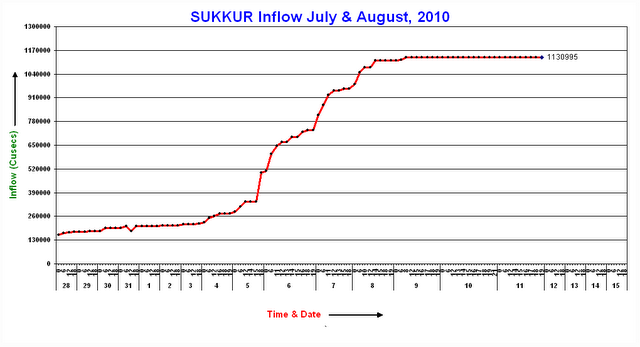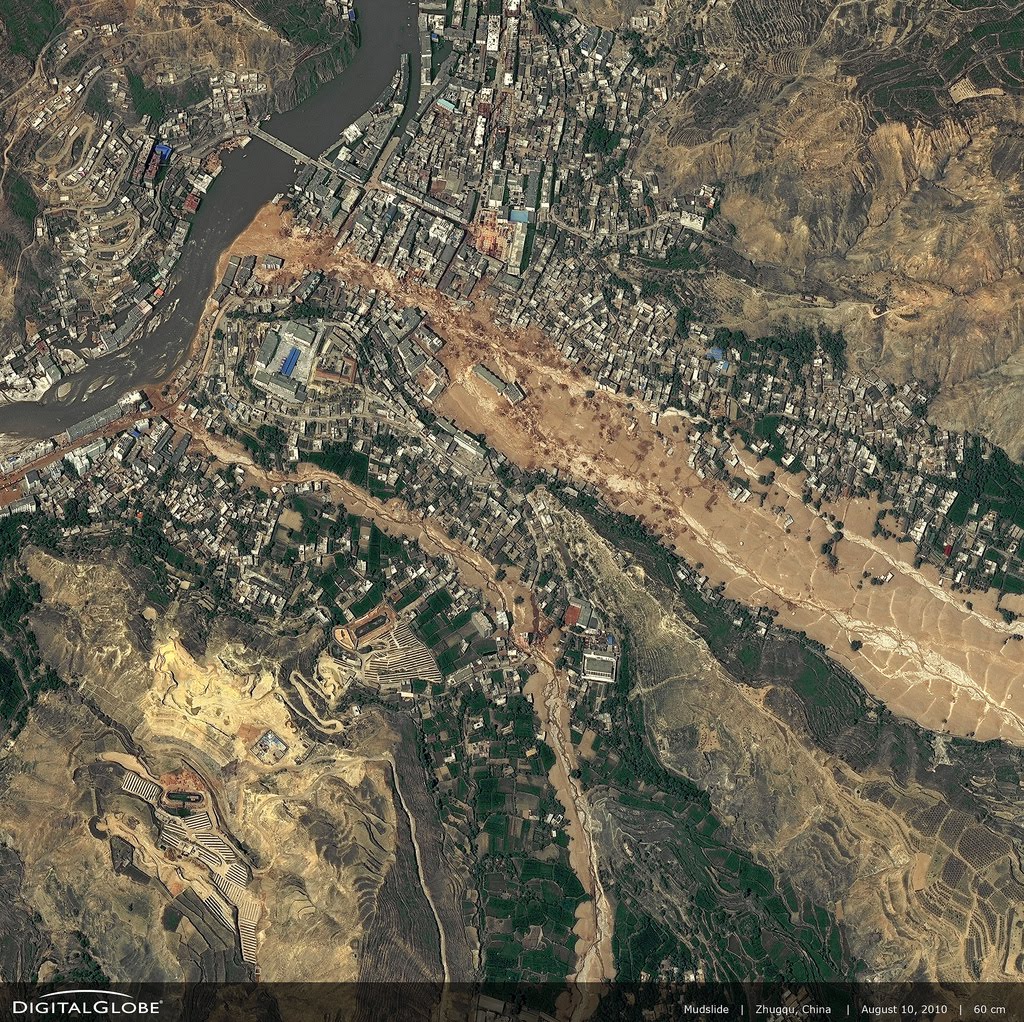11 August 2010
Update on the disasters in China and Pakistan: 11th August 2010
Posted by Dave Petley
Apologies for the tardiness of this update – it has been a busy day! First a heads-up, I will write a post to go on the Institute of Hazard, Risk and Resilience blog on these disasters in the context of climate change in the next couple of days. I will signpost the piece here when it is ready.
1. Pakistan
The sheer magnitude of the disaster in Pakistan is difficult to comprehend. Unfortunately the true horror of this event is probably remaining hidden; the real impact will come when the water levels in the south subside to leave polluted water wells, destroyed homes and wrecked crops. The legacy of this disaster will be long-lasting, and will have a profound impact on Pakistan and elsewhere.
Starting in the north, heavy rain continues to wreak havoc, and the Pamir Times appears to be the only outlet from which a really good idea of the true impact can be gained. In Gilgit-Baltistan the population is isolated by the blockage of the Hunza river to the north, preventing supplies from China, and the loss of bridges and the road to the south, leaving the population in dire need. Electricity, water, food and medicine are in short supply. Meanwhile, the Pamir Times is also reporting a disaster at Diamir, caused by the failure of another landslide dam. They report at least 50 fatalities and 300 houses washed away. Assuming that the report is correct, expect this to make the news tomorrow as word seeps out. One hopes that the toll does not increase further, but I am fearful that this is likely.
To the south, the media has cottoned onto the fact that there is a second wave heading down the Indus now, an issue that I have been highlighting since the weekend. Dawn.com quotes the meteorological service in warning of floods in the northern regions of the Pakistan plains. This second wave is now generating a substantial flood at Chashma:
Fortunately it is not as large as the first wave, but is still only just below the “extremely high” category. In the context of already damaged infrastructure, the potential for further destruction is clear.
Downstream at Guddu the hydrograph is falling very slowly, but remains far above the extremely high flood level:
Whilst at Sukkur the hydrograph remains saturated, meaning that the true level is hard to judge:
Unfortunately the first flood still has some way to go before discharging to the sea. The Pakistan Flood Forecasting division must be praised for the brevity of their weather forecasts. Tomorrow’s forecast says:
Several people have asked about a good NGO to whom donations could be made. In this blog I have worked extensively with Focus Humanitarian Assistance, who specialise in providing help to people’s affected by disasters, and who did undeniably wonderful work in Pakistan in the aftermath of the Attabad crisis. As part of the Aga Khan Development Network I believe that they are a safe and honorable NGO, and they remain my preferred partner for work in Pakistan.
2. China
Once again the death toll from the Zhouqu landslide in Gansu has jumped, with Xinhua reporting a total of 1,117 fatalities and a further 627 people still missing. The struggle to breach the partial barrier formed by the landslide across the barrier is intense, with the use of explosives to try to break the blockage. Concern is rising in the light of continued poor weather in the area, with thunderstorms occurring today and heavy rains forecast for the next two days. Meanwhile, there is a fascinating level of honesty in the Chinese media about the likely causes of the landslide. For example, this article explores the contributing factors, whilst in this one a minister reflects upon both climatic extremes and illegal construction. The level of openness is surprising, but very welcome.
The press of course continue to describe the anguish of the families of the victims, especially as the “golden” 72 hour period is now passed. Presumably a decision will be needed soon to terminate the rescue operation and to regrade and entomb the debris. I suspect that it is inevitable that many of the victims will not be recovered, with the site being preserved as a memorial to them.
Finally, Digital Globe have released a very high resolution satellite image of the site of the landslides, which is available here:
Very useful, but unfortunately, it still does not provide an insight into the source area of the slide – has anyone seen an image of this zone as yet?
More tomorrow.






 Dave Petley is the Vice-Chancellor of the University of Hull in the United Kingdom. His blog provides commentary and analysis of landslide events occurring worldwide, including the landslides themselves, latest research, and conferences and meetings.
Dave Petley is the Vice-Chancellor of the University of Hull in the United Kingdom. His blog provides commentary and analysis of landslide events occurring worldwide, including the landslides themselves, latest research, and conferences and meetings.
Thank you for very good update about Pakistan flood situation. UN spokesman yesterday termed Pakisytan flood disaster as the largest natural calamity UN has faced since existence.I agree with your recommendation of FOCUS as preferred NGO to give donation. They are approved charitable organisation in Pakistan ,USA,EU and they are doing very good work in present floods in Pakistan. Lot of private donors in UAE are selecting FOCUS for donations as they have very good reputation. http://www.akdn.org/focus_contact.asp
Dear DaveThis one shows a little further upslope in the slide area, but still not the source: http://www.bbc.co.uk/news/world-asia-pacific-10925531Many thanks for your great blog, which I follow avidly.
Thanks a lot, Dave. I appreciate your informations very much. Barbara from Germany
The work you put in the blog is appreciated Dave, thanks for the links and information
Nasa's MODIS rapid response has been building a collection of Pakistan images. This striking image gives a good impression of the scale of the Indus flood. It is surely not over.Eos has a comparison pair of imagines of section of the above area. (Aug 1, 2009 bottom compared to July 31, 2010 top).Nothing is labeled, alas.
Nasa's stuff does sprawl. Here's another set showing Sukkor. (labeled, even!)That page has a link to Dave's blog right to this post.Got there from http://earthobservatory.nasa.gov/NaturalHazards/
Shelter Now, a NGO that has long been active in the region is distributing food to people in villages that are cut off from other help. http://www.facebook.com/ShelterNow?ref=tsThey are relatively small, that makes them very flexible and able to reach remote areas.
Hello Dave, if you have not found a picture of the source of the Zhouqu mudslide yet – I believe this is it:http://globalvoicesonline.org/2010/08/09/china-zhouqu-landslide-a-man-made-disaster/There is some interesting – if sad – context as well.Unfortunately I did not find a decent satellite photo to make out where exactly that particular mountain may be. The "new" image on Google Earth is from 2005, when the town seemed just to be built and it is difficult to compare with newer pictures.Thank you for the great amount of information you are providing! It helps us not only to hear the news (and quickly forget them) but also to get an idea of the suffering that goes with every single disaster and thereby to create a greater readiness to help.
Anonymous, the editor of that page has been a bit naughty by using an image of another slide without indicating that is the case. That picture is the Las Colinas landslide at Santa Tecla, El Salvador, triggered by the 13th January 2001 earthquake.Dave